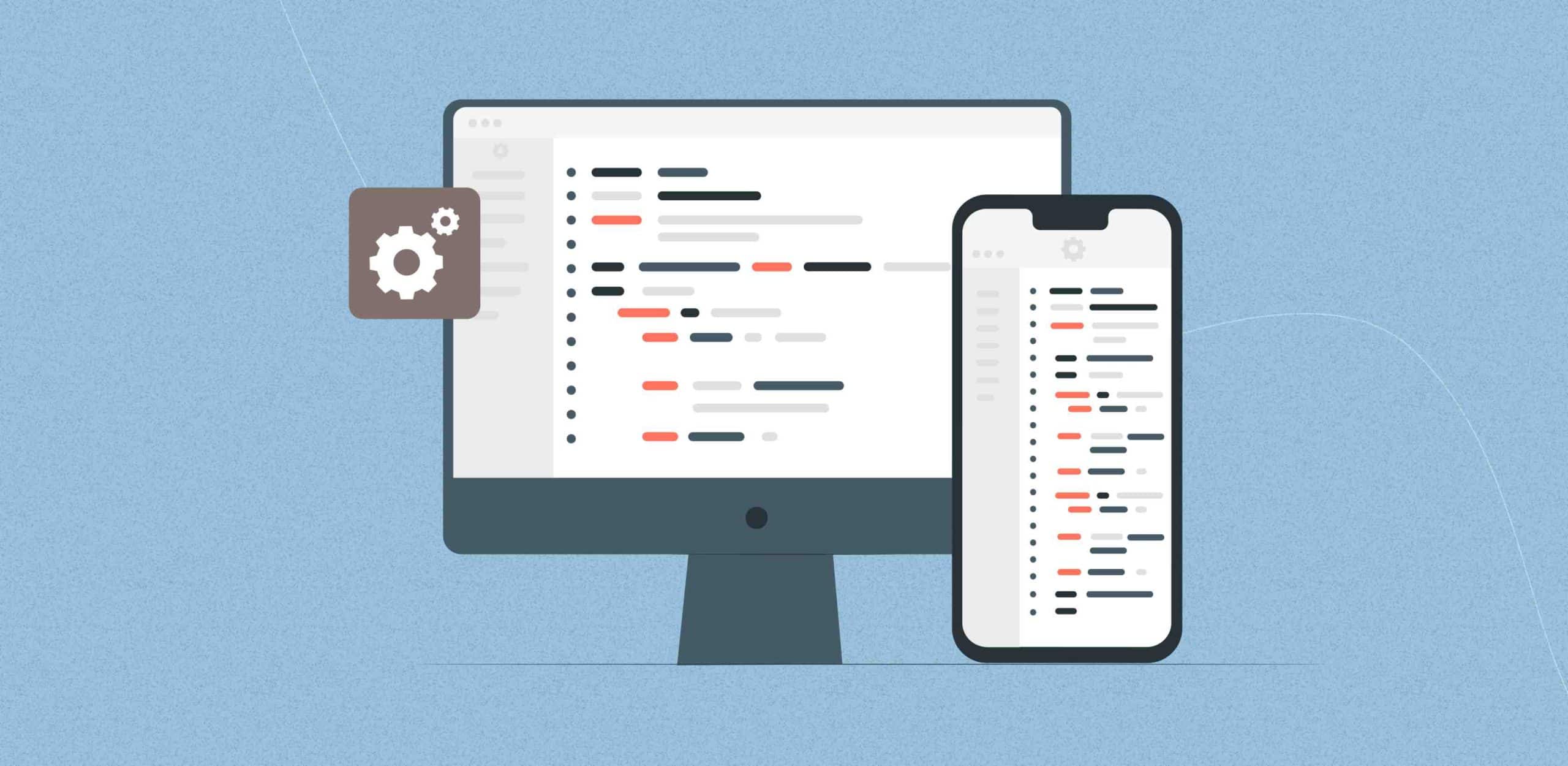Generative AI development is revolutionizing how we approach technology, offering innovative solutions, and transforming industries. In this comprehensive guide, we delve into the intricacies of generative AI development, shedding light on its process, significance, and applications.
This blog is tailored for those interested in leveraging generative AI development services or embarking on a journey with a generative AI development company.
What is Generative AI?
Generative AI refers to the subset of artificial intelligence where machines can generate new content, ideas, or data based on the training they receive. This technology goes beyond traditional AI’s analytical capabilities, stepping into the realm of creation and innovation. It’s not just about understanding or interpreting data but about generating new, previously non-existent material, whether it be text, images, or even code.
Types of Generative AI Models
1. Generative Adversarial Networks (GANs) : One of the most groundbreaking developments in generative AI development is Generative Adversarial Networks, or GANs. These models involve two neural networks—the generator and the discriminator—working in tandem to produce highly realistic outputs, ranging from artwork to photorealistic images. GANs are a testament to the creative potential of AI, demonstrating how generative AI development services are pushing the boundaries of what machines can create.
2. Variational Autoencoders (VAEs): VAEs are pivotal in the field of generative AI development, offering a different approach to model training. These models are excellent at generating new data points that are similar to the input data, making them ideal for applications like voice synthesis and data augmentation. The ability of VAEs to learn complex data distributions highlights the versatility of generative AI development services in creating robust AI solutions.
3. Autoregressive Models: These models, which include well-known architectures like GPT (Generative Pretrained Transformer), are central to the operations of any advanced generative AI development company. Autoregressive models predict subsequent elements of a sequence, making them invaluable in natural language processing tasks, from text generation to language translation.
4. Transformer-based Models: Transformers have revolutionized generative AI development by offering unparalleled performance in understanding context in sequences. This model’s unique self-attention mechanism allows it to excel in tasks such as text generation, summarization, and even in generating computer code, showcasing the broad applications of generative AI development services.
5. Diffusion Models: A newer entrant in the generative AI landscape, diffusion models have garnered attention for their ability to generate high-quality images. These models work by gradually constructing images from random noise, a process that mimics natural image formation. Their innovative approach underscores the cutting-edge nature of services provided by a leading generative AI development company.
Applications of Generative AI in diverse domains
Generative AI in Healthcare: Revolutionizing Diagnosis and Treatment
In healthcare, generative AI is a game-changer. It’s being used to develop personalized medicine, enhance diagnostic accuracy, and even simulate surgical procedures. AI algorithms can analyze medical images to detect diseases earlier and with greater precision than ever before. This innovation not only improves patient outcomes but also streamlines the healthcare process.
Generative AI in Automotive Industry: Driving Innovation
The automotive sector is harnessing generative AI to design more efficient and safer vehicles. AI-driven simulations test car performance under various conditions, leading to the production of vehicles that are both high-performing and environmentally friendly. Additionally, generative AI is playing a crucial role in the development of autonomous driving technologies.
Generative AI in Finance: Transforming Risk Assessment and Management
In finance, generative AI is revolutionizing risk assessment and management. By analyzing vast datasets, AI can predict market trends and identify potential risks, enabling more informed decision-making. It’s also being used in fraud detection, enhancing the security of financial transactions.
Generative AI in Entertainment and Media: Crafting Personalized Content
Generative AI is transforming the entertainment and media industry by creating personalized content. From customizing music playlists to generating unique video game environments, AI is enabling a more tailored entertainment experience for consumers. It’s also being used in scriptwriting and content creation, opening new avenues for storytelling.
Generative AI in Retail: Enhancing Customer Experience
In retail, generative AI is enhancing the customer experience by personalizing shopping journeys. AI algorithms can predict customer preferences, recommend products, and even assist in managing inventory levels. This technology is making shopping more intuitive, efficient, and enjoyable for consumers.
Generative AI in Education: Personalized Learning Experiences
Generative AI is making strides in education by providing personalized learning experiences. AI-driven platforms can adapt to individual learning styles, pace, and preferences, offering customized educational content. This approach not only makes learning more engaging but also improves academic outcomes.
What are the benefits of Generative AI?
Enhanced Creative Possibilities: Generative AI opens up unprecedented creative possibilities, enabling the creation of novel designs, texts, and solutions that can inspire new trends and ideas in various fields.
Scalability: AI systems can operate at a scale and speed unmatchable by human efforts, making them ideal for tasks that require processing large amounts of data or content generation.
Risk Reduction in Decision-Making: By providing data-driven insights, generative AI can significantly reduce risks in decision-making processes, particularly in industries like finance and healthcare.
Accessibility of Sophisticated Solutions: Small businesses and individuals can access sophisticated tools and solutions that were previously only available to large corporations with substantial resources.
Enhancement of Human Capabilities: Generative AI can augment human creativity and problem-solving, leading to more innovative and effective solutions.
Experience the Power of Customized AI: Consult us for Tailored Solutions!
What are the limitations of Generative AI?
Bias in AI Models: AI systems can perpetuate and amplify biases present in their training data, leading to skewed and potentially unfair outcomes.
Complexity in Implementation: Integrating generative AI into existing systems can be complex and resource-intensive, requiring specialized skills and knowledge.
Lack of Contextual Understanding: While generative AI is excellent at pattern recognition, it often lacks the ability to understand context and nuance in the same way humans do, which can lead to errors in judgment or content generation.
Regulatory Challenges: The rapid evolution of AI technology poses significant challenges in terms of regulation and compliance, particularly in areas concerning data privacy and ethical standards.
Real-world examples of Generative AI models
GPT by OpenAI: GPT, developed by OpenAI, is one of the most advanced language processing AI models. It’s capable of generating human-like text, answering questions, translating languages, and more. From automated content creation to advanced chatbots, GPT’s applications are vast, impacting sectors like customer service, marketing, and creative writing. Its ability to understand and generate natural language has set a new standard in AI communication capabilities.
DeepMind’s AlphaFold: AlphaFold, created by DeepMind, is an AI system that predicts the 3D structures of proteins with incredible accuracy. It’s pivotal in the field of biology and medicine, helping researchers understand diseases and accelerate drug discovery. AlphaFold’s breakthroughs in protein folding prediction have the potential to revolutionize biomedical research.
NVIDIA’s StyleGAN: StyleGAN, developed by NVIDIA, is a generative adversarial network known for creating highly realistic images, especially human faces. Its uses range from graphic design and gaming to training data generation for AI models. StyleGAN has pushed the boundaries of image generation, enhancing realism in virtual environments.
IBM Watson: IBM Watson is an AI platform known for its powerful natural language processing and understanding capabilities. Watson is used in a variety of fields, including healthcare for patient care, finance for risk assessment, and customer service for improved user interaction. Watson’s ability to process and analyze large volumes of data has significantly improved decision-making processes in businesses.
Google’s BERT: BERT (Bidirectional Encoder Representations from Transformers) by Google is a revolutionary model in the field of natural language processing. It enhances search engine results, improves language translation accuracy, and aids in content relevancy evaluation. BERT has improved the understanding of user queries on search engines, leading to more accurate and relevant search results.
What is Generative AI Development?
Generative AI development refers to the process of designing and creating AI systems that can generate new content or data based on existing patterns and information. This advanced form of AI is not just about understanding or processing data but about creating something entirely new and innovative from it.
The Process of Generative AI Development: The journey of developing generative AI involves a series of intricate steps, each playing a crucial role in the final outcome. Let’s dive into these stages:
Data Collection and Analysis: The foundation of any generative AI development services lies in gathering extensive and varied datasets. This data is then analyzed to understand the patterns and structures inherent within it.
Model Selection and Training: Choosing the right model is pivotal. Whether it’s Generative Adversarial Networks (GANs), Variational Autoencoders (VAEs), or another model, the decision hinges on the specific requirements of the project. Training these models requires skill and patience, as the AI learns from the dataset to produce accurate outputs.
Testing and Refinement: Generative AI systems are rigorously tested to ensure their effectiveness. This phase often involves tweaking and refining the model to achieve the desired level of creativity and accuracy.
Deployment and Monitoring: Once developed, these AI systems are deployed into real-world applications. Continuous monitoring is essential to ensure they adapt and evolve with changing data and requirements.
Benefits of Partnering with Enfin Technologies
Conclusion
Enfin Technologies stands at the forefront of generative AI development, offering cutting-edge solutions that can revolutionize your business operations. By embracing our expertise, your business can not only navigate the complexities of the modern marketplace but also establish a strong foothold in the era of digital transformation.
Partner with us for custom software development!
F. A. Q.
Do you have additional questions?
What is Generative AI, and how does it differ from traditional AI?
Generative AI refers to the subset of artificial intelligence where machines can generate new content, ideas, or data based on training. Unlike traditional AI, which focuses on analyzing data, generative AI goes beyond and involves creating new, previously non-existent material, such as text, images, or code.
What are the key types of Generative AI models, and how do they function?
Explore the various types of generative AI models, including Generative Adversarial Networks (GANs), Variational Autoencoders (VAEs), Autoregressive Models, Transformer-based Models, and Diffusion Models. Understand how these models operate and their applications in different scenarios.
In what industries is Generative AI making a significant impact, and how?
Learn about the applications of generative AI across diverse domains such as healthcare, automotive, finance, entertainment and media, retail, and education. Understand how generative AI is transforming processes, enhancing experiences, and driving innovation in these industries.
What are the benefits and limitations of Generative AI?
Explore the advantages of generative AI, such as enhanced creative possibilities, scalability, risk reduction in decision-making, accessibility of sophisticated solutions, and the enhancement of human capabilities. Additionally, understand the limitations, including bias in AI models, complexity in implementation, lack of contextual understanding, and regulatory challenges.
Can you provide real-world examples of Generative AI models, and how are they being used?
Gain insights into real-world applications of generative AI through examples like GPT by OpenAI, DeepMind’s AlphaFold, NVIDIA’s StyleGAN, IBM Watson, and Google’s BERT. Understand how these models are impacting various industries and contributing to advancements in language processing, protein structure prediction, image generation, natural language understanding, and search engine relevancy.













